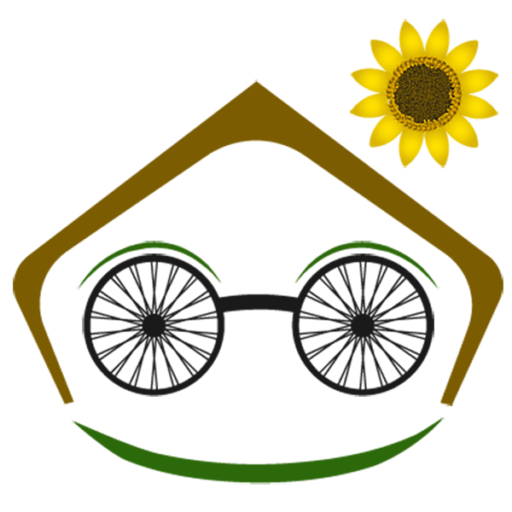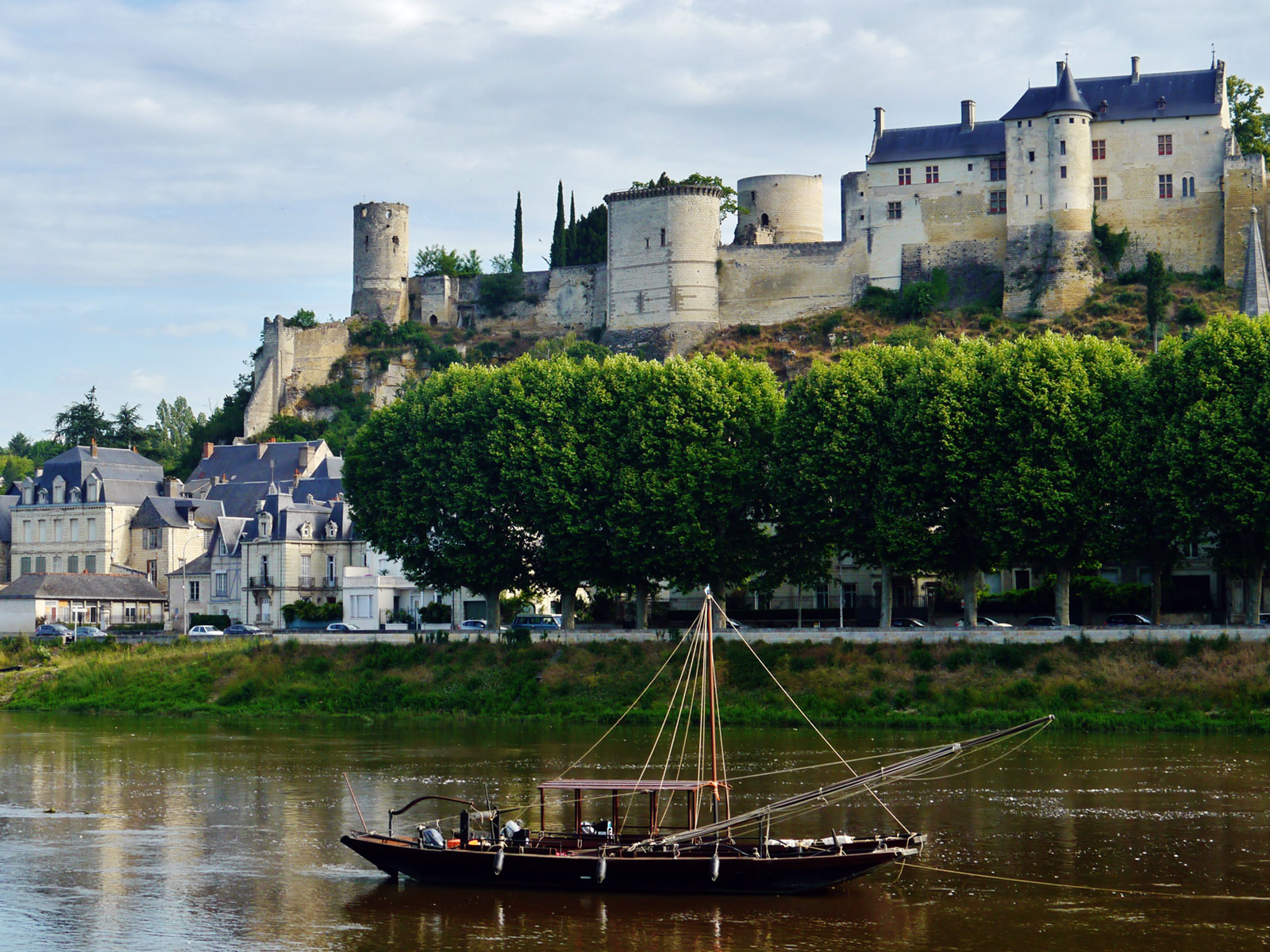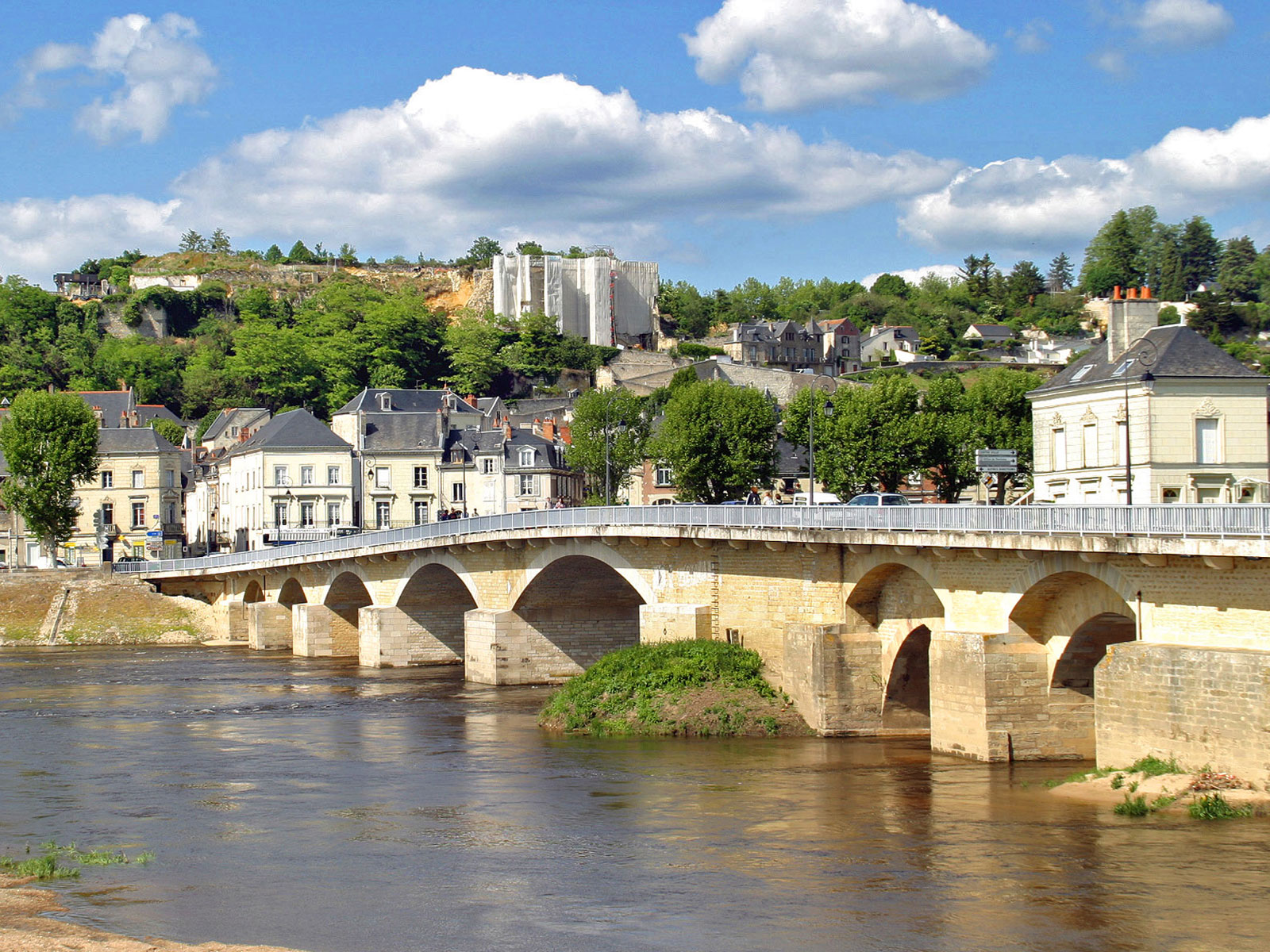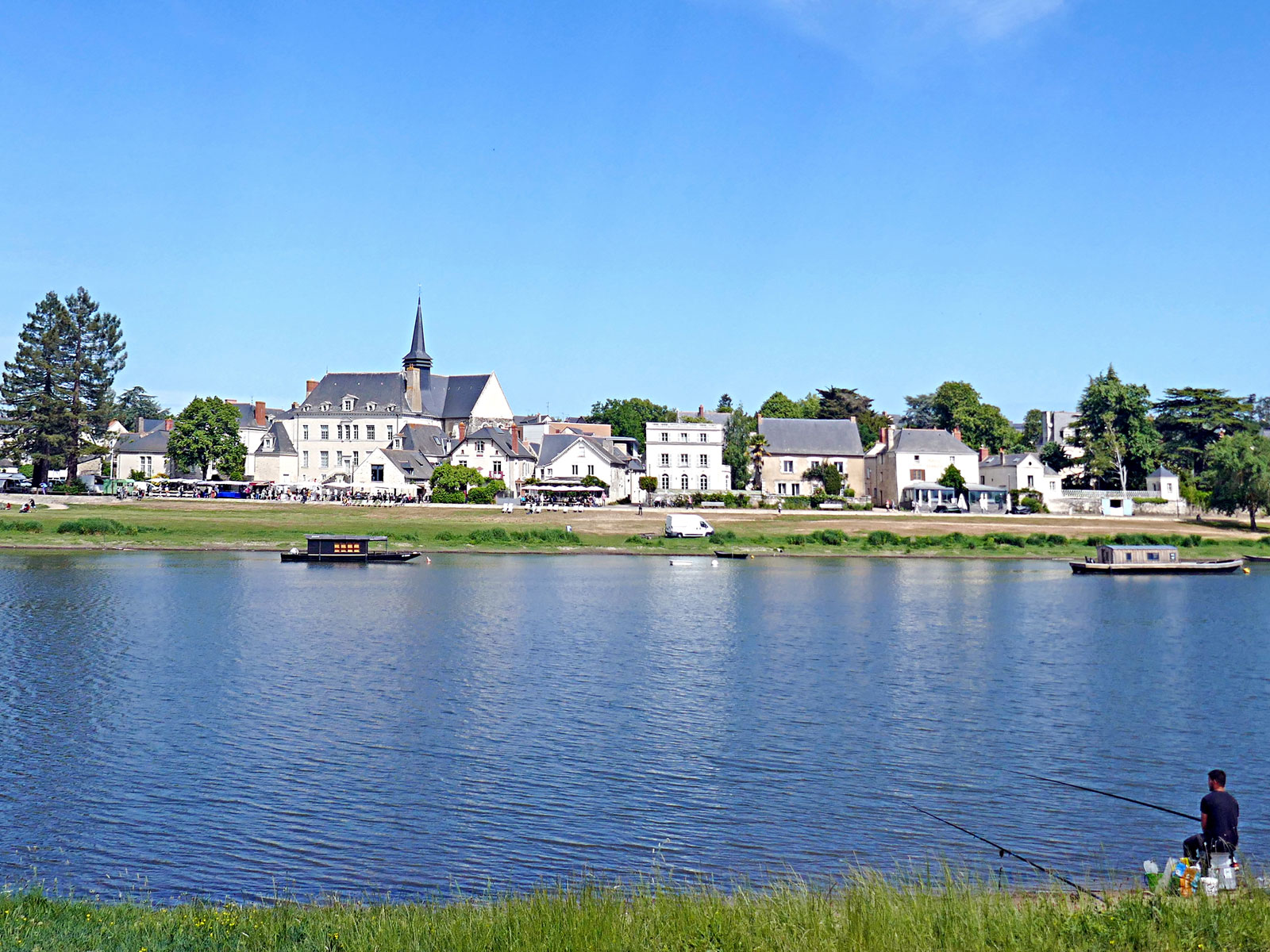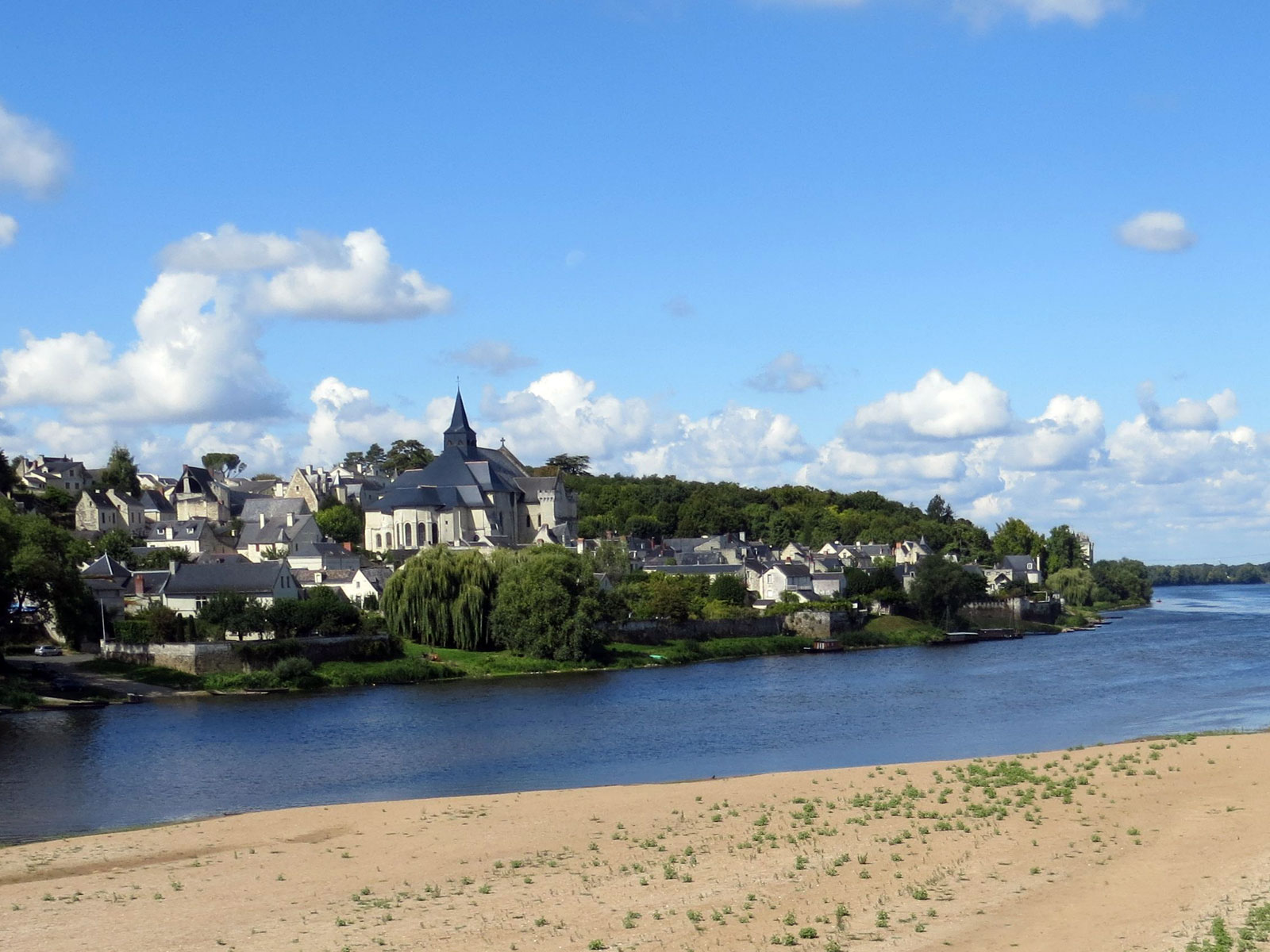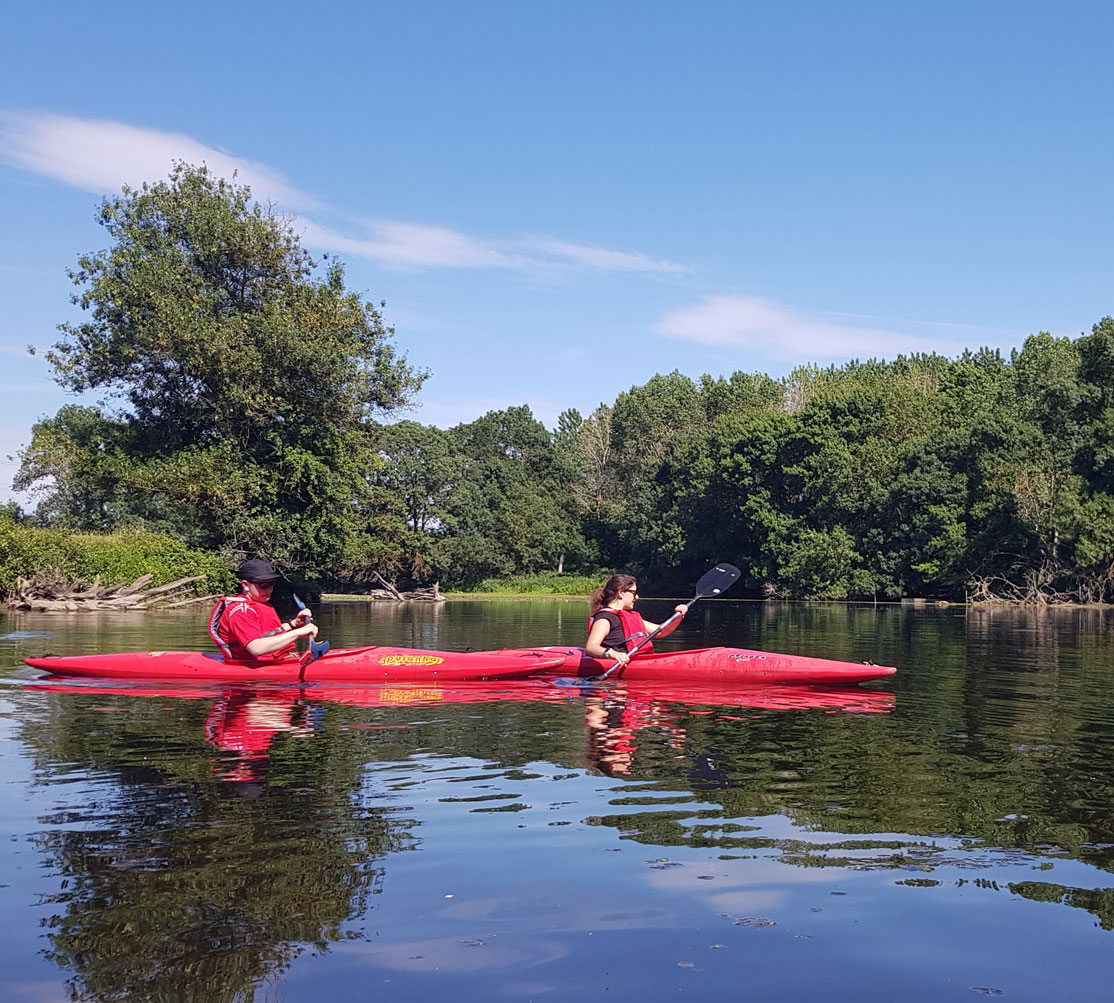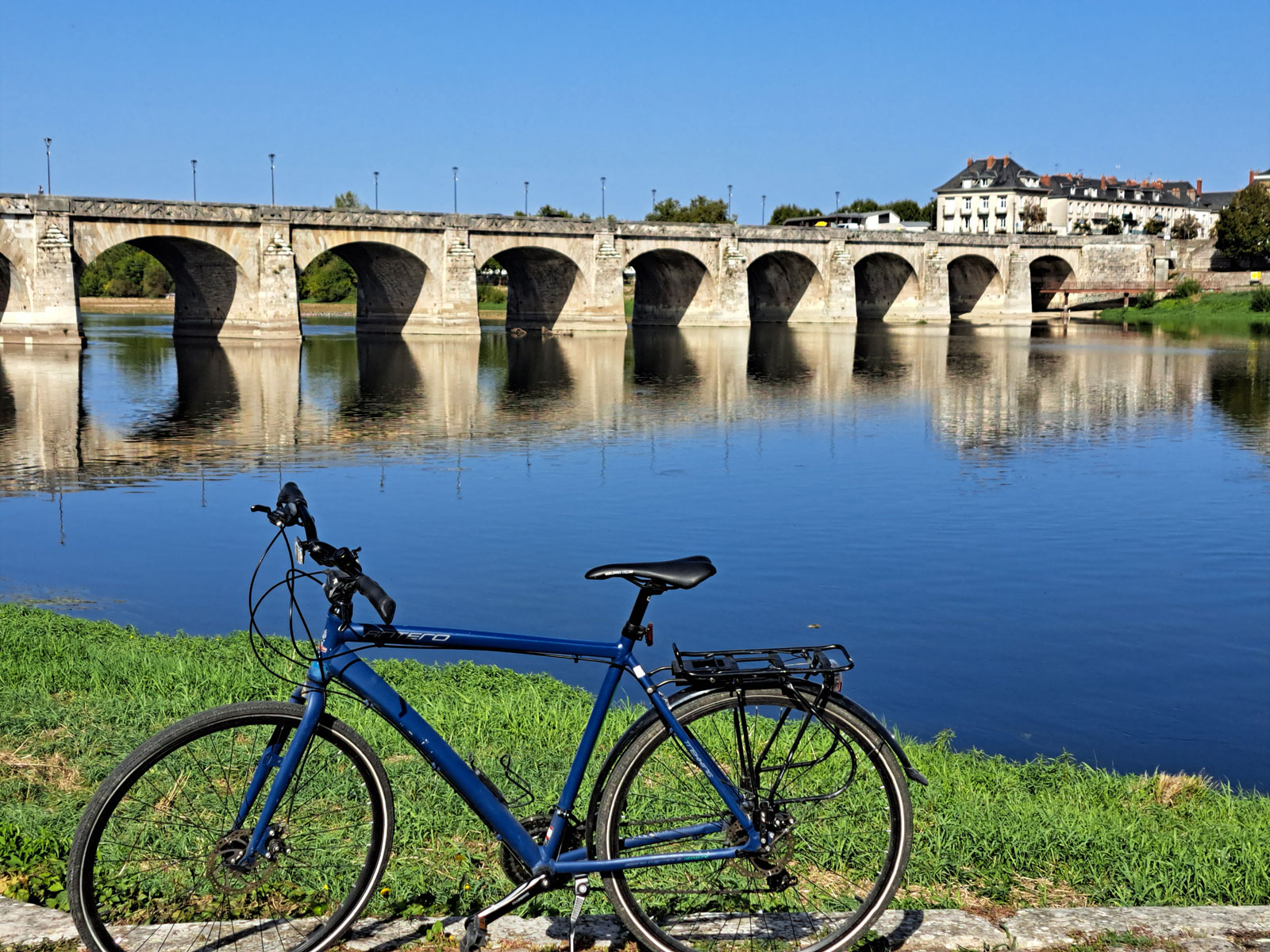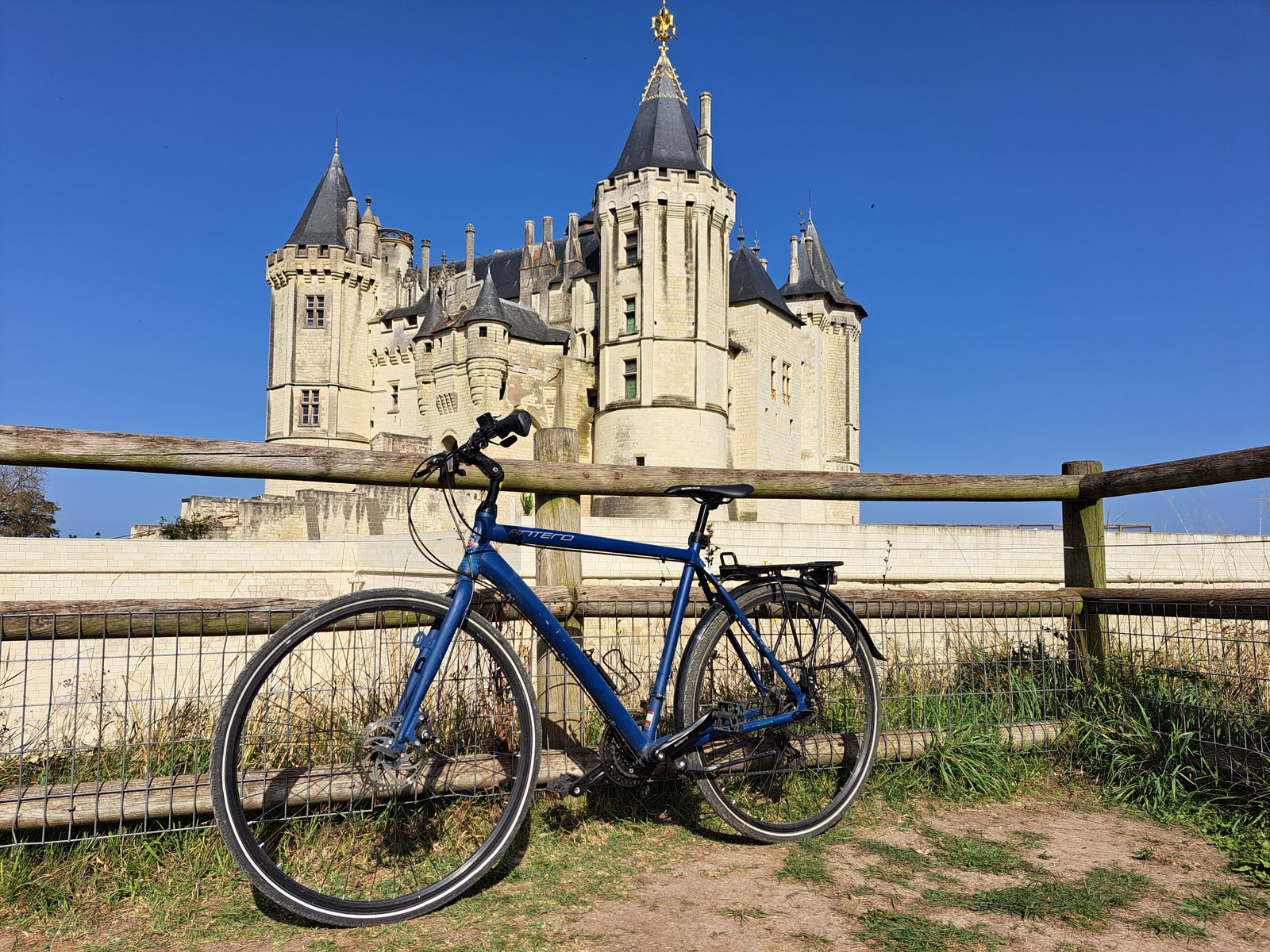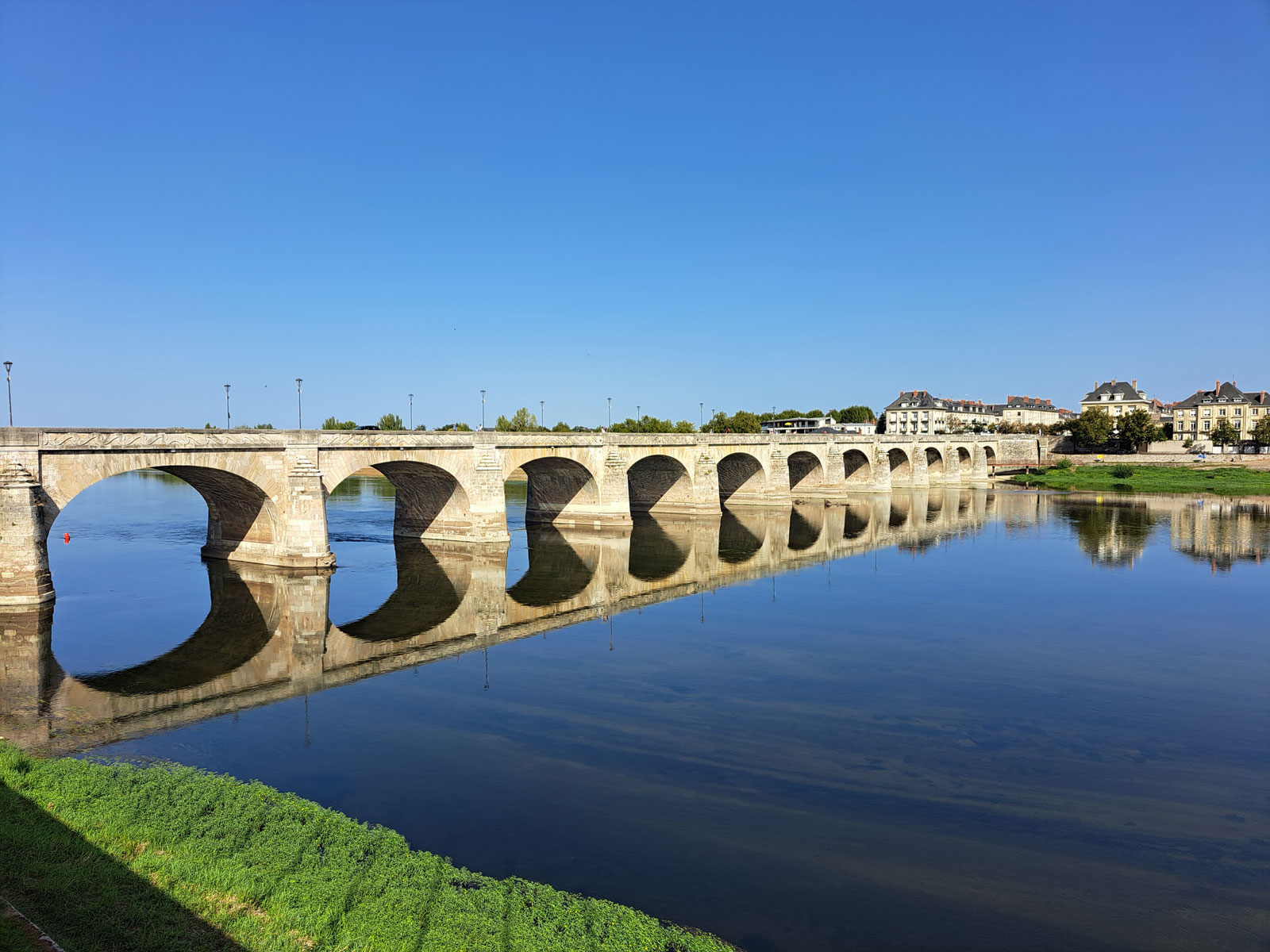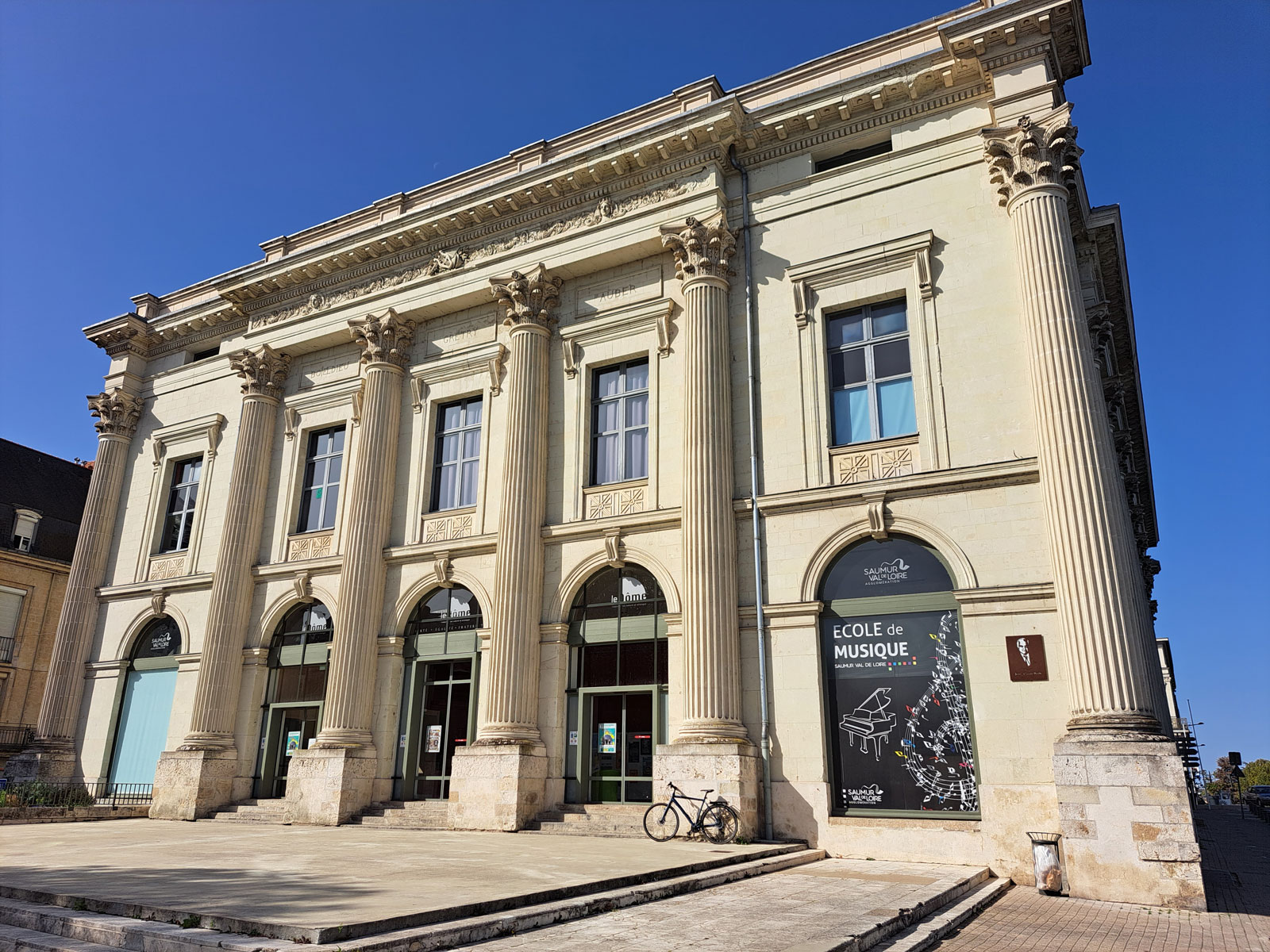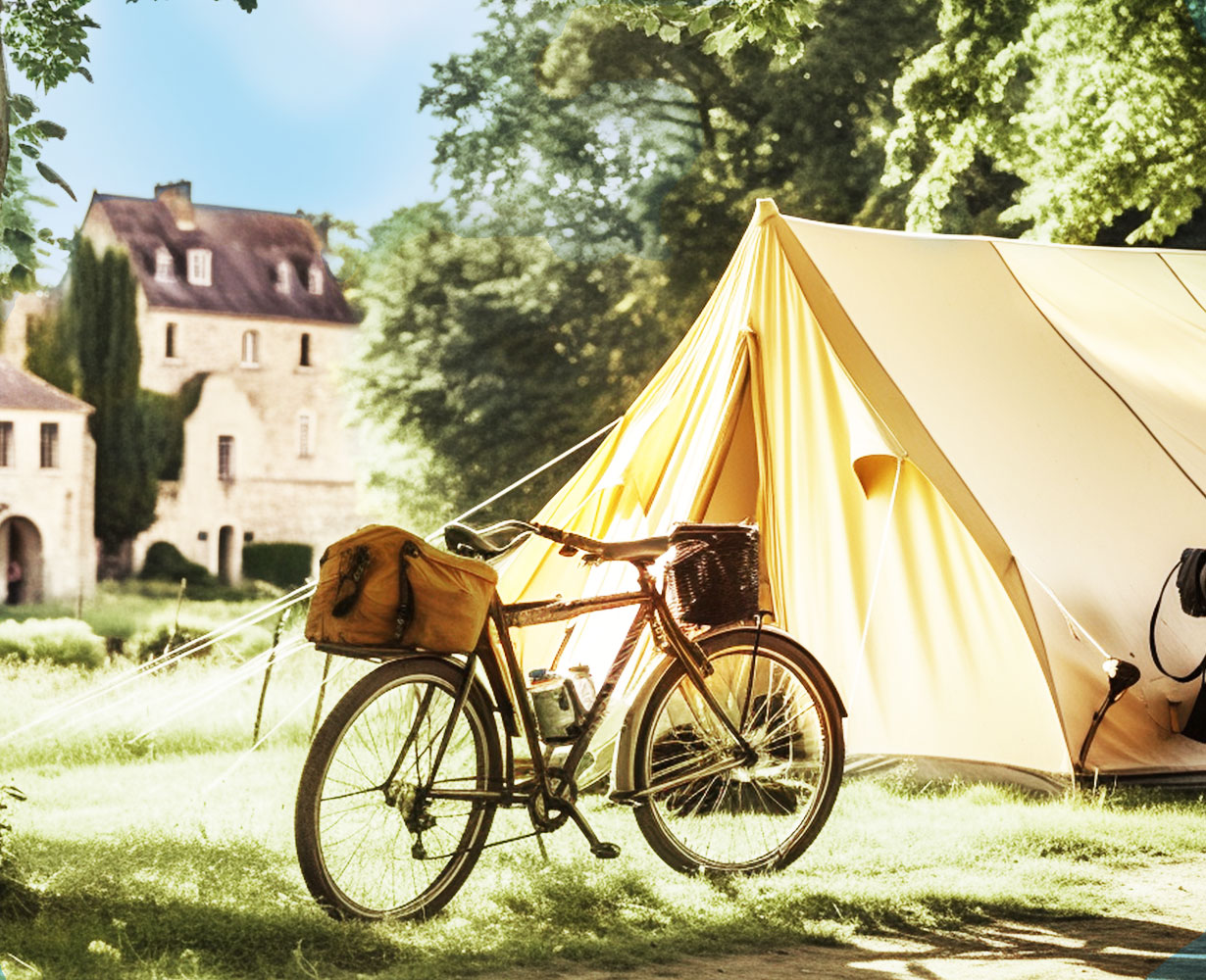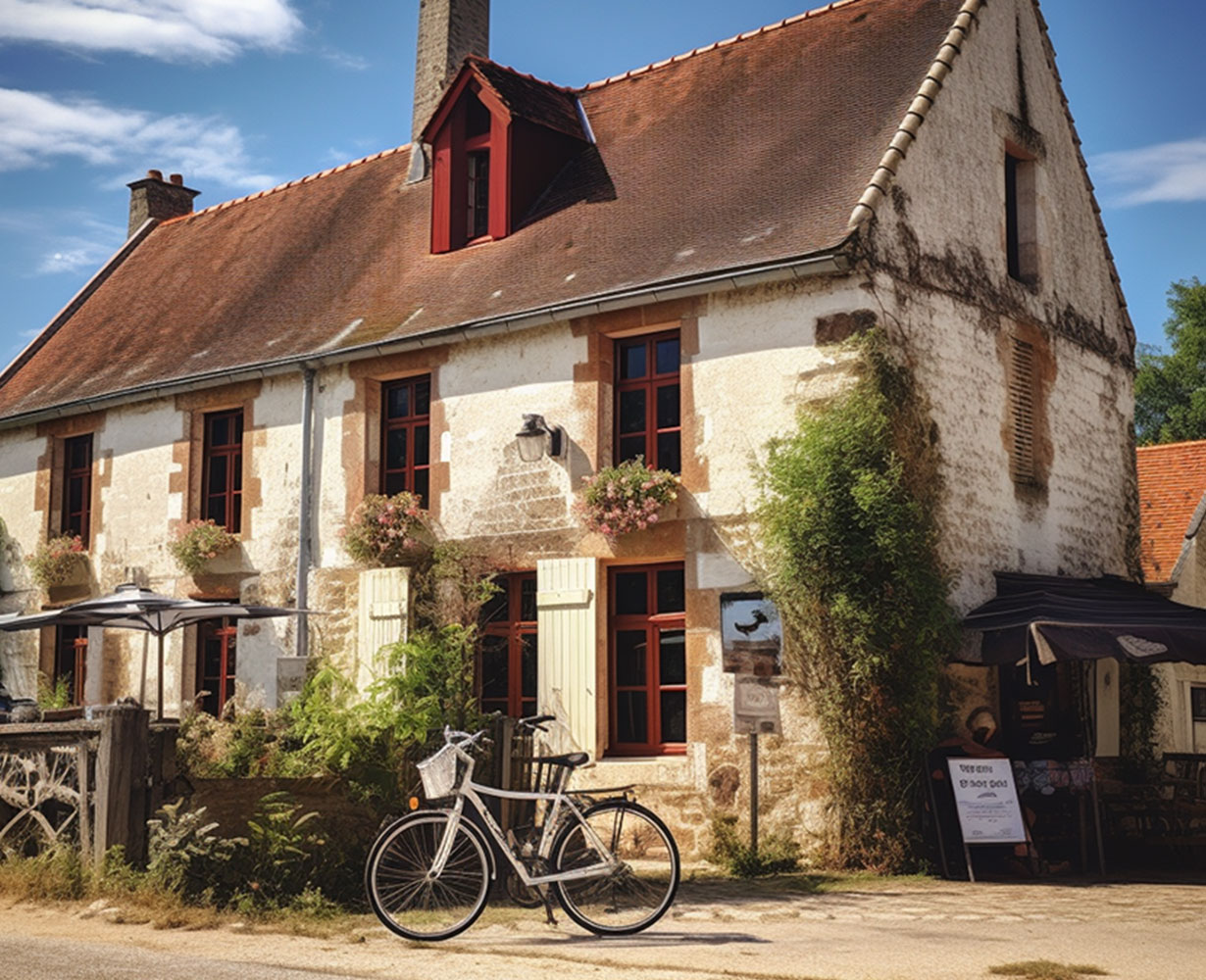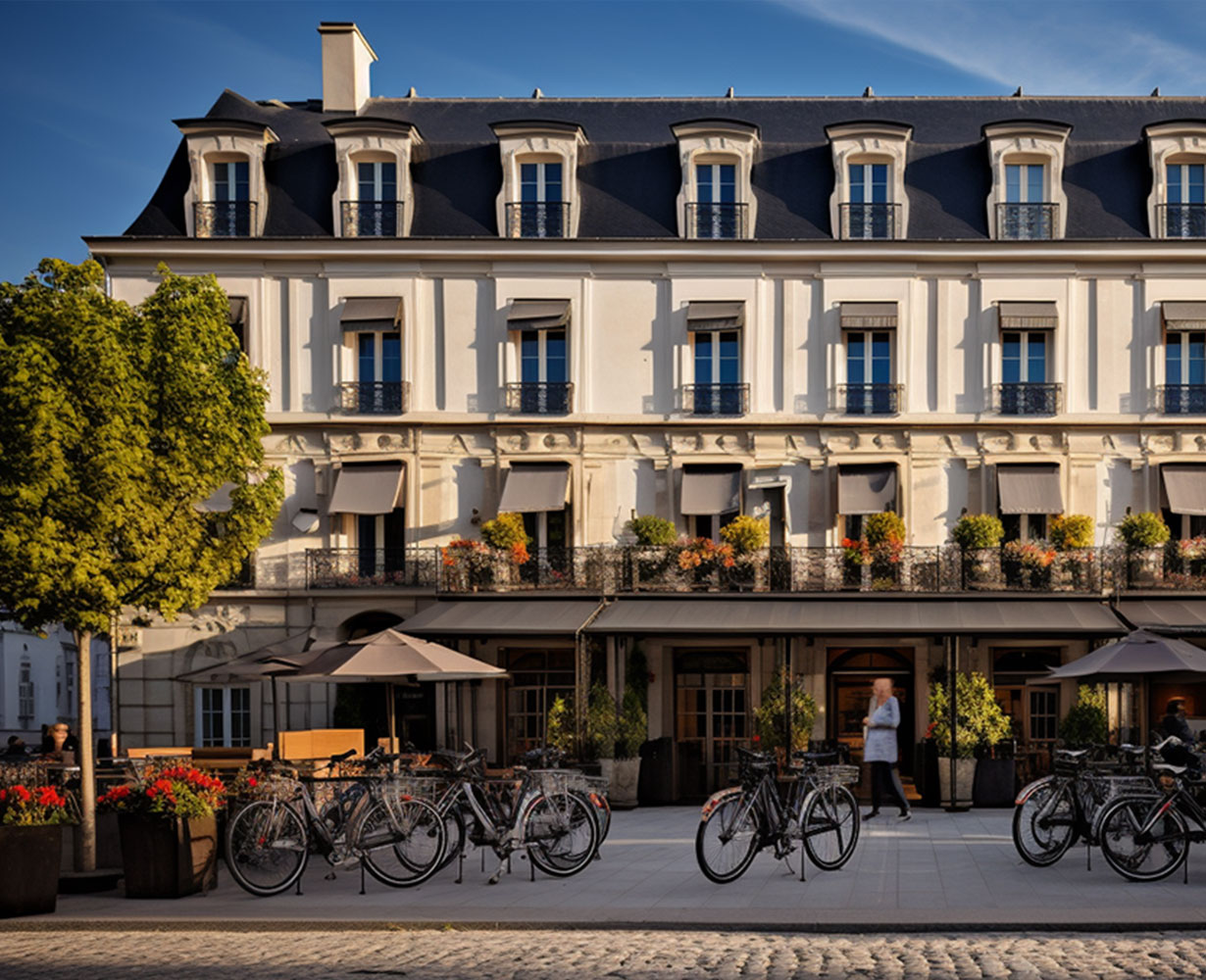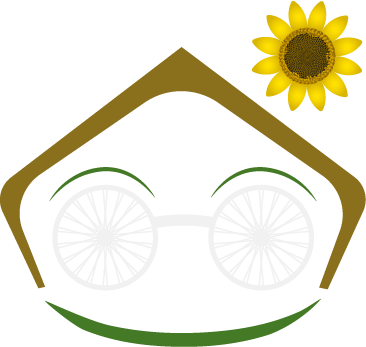Touring from Chinon to Angers by bike
This tour starts in Chinon, passes through Saumur and concludes in Angers. It crosses the Vienne, Thouet and Maine rivers – tributaries of the maturing Loire. Whilst accommodation will usually be fairly close to the Loire a Velo Bike Route, there will be plenty of opportunity to explore the surrounding area – corn fields, vineyards, fields of sunflowers etc. The route provides access to lots of winemakers, bars and restaurants! There’s chateaux, museums, zoos, churches and abbeys in abundance. If you rather “do” that “look” there are Boat trips, Hot air ballooning, canoes & kayaks, horse riding, golf and quad bikes available.
Chinon sits on the Vienne river within a UNESCO World Heritage Site. Its past is full of “history” for both the English and French – too much to describe here! (Henry II, Eleanor of Aquitaine, Richard I (the Lionheart), King John Lackland, Philip II Augustus, Philip IV the Fair, the Knights Templar, Hundred Years’ War, Charles VII, Joan of Arc, Louis XII, François Rabelais, Duke of Richelieu)
Candes St Martin is acknowledged as one of the most picturesque villages in France. Situated on the southern bank of the Loire at its intersection with the Vienne, the village grew as a port on the river, facilitating the transportation of wine, pears, Tuffeau stone, salt and fish. A short ride through the pretty narrow streets of tufa stone houses with their slate roofs is very rewarding.
Saumur is a very distinctive town built between between the Loire and Thouet rivers in the Loire Valley, France. Most of the properties in the town centre were built using local Tuffeau stone – a cream/yellow limestone that is easier to shape than other stone products and facilitates ornate carving. The mining of the Tuffeau created hundreds of caves which today are often used for growing mushrooms. More common is their use as wine cellars by the very significant wine industry in and around Saumur
Gennes (in common with many towns on the banks of the Loire) was formed where a river (Avort) meets the mighty Loire. The name is derived from the ancient Gallic work for river mouth – “gena”. It has been a focus of human activity for thousands of years with the highest concentration of megaliths in this part of France. There are a number of neolithic dolmen – tombs constructed of huge stones having a principal huge slab-like stone for a roof supported by other large upright stone posts. South of the town centre is a two thousand year old roman amphitheatre built into the side of a hill. Accommodating five thousand spectators it is one of the largest in France. Visitors are allowed access in the summer months. The history of Gennes is also discoverable through an interactive trail suitable for most adults and children. The river Avort was once the source of power for nine watermills the last of which, The Moulin de Sarré, is still in operation, producing flour and selling it and other flour based products. There are a number of walks and trails though the Joreau forest. You can take a leisurely walk alongside the pond, or explore deeper into the forest following the signed trails. There are an number of restaurants and bars in Gennes and a small selection of boutique shops.
Angers too was established where rivers meet but in this case it was the merging of three (Loir, Mayenne and Sarthe) that then becomes the river Maine. Angers doesn’t sit on the banks of the Loire which meets the Maine further south. Angers is an ancient town of thousands of years but it is the medieval period that has left the greatest impression. As a tourist you will see much of this as you move around: cobbled streets, half-timbered houses etc. Some specific things worth a visit would be Chateau d’Angers and the apocalypse Tapestry (the biggest medieval tapestry in the world). Of course wine is well represented in Angers – the Maison des Vins is probably the best place to start to get to understand the 27 appellations of the Anjou/Saumur region. A theme park with a difference “Terra Botanica” is a fantastic endorsement of Angers’ “Greenest City” status. The Loire itself is a must, you need to appreciate why the Loire Valley is a UNESCO World Heritage site for the outstanding beauty of its landscapes. If time permits you also have to see the Château du Plessis-Bourré, Château du Plessis-Macé , Château de Serrant, and Château de Brissac (France’s tallest Château).
Getting to Saumur
Saumur has principal rail connections to Tours & Angers and through these to Paris and Nantes.
Tour Airport has international connections with Dublin and London (Stansted).
Nantes Airport has connections from Algeria, Austria, Belgium, Bulgaria, Canada, Croatia, Czech Republic, Denmark, Egypt, France, Germany, Greece, Ireland, Italy, Malta, Martinique, Morocco, Netherlands, Portugal, Senegal, Spain, Switzerland, Tunisia, Turkey and United Kingdom.
All other arrivals would need to be via Paris, then taking the train to either Angers or Tours for the connection to Saumur.
Getting to Angers
Angers has rail connections to Tours, Nantes and Paris.
Tours Airport has international connections with UK and Ireland.
Nantes Airport has connections with most European countries. Visitors from outside of Europe would arrive at Paris, then take the train to Angers.
Things to Do
Activities
- Saumur Forest Adventures
- Thouet Kayaks
- Hot Air Ballooning
- Horse Riding
Attractions
- Forteresse Royale de Chinon
- Musée Rabelais
- Véron EcoMuseum
- Fontevraud Abbey
- Dolmen de Bagneux
- Musée des Blindés
- Cadre Noir
- Château de Saumur
- Château de Brézé
- Mushroom Museum
- Château d’Angers
- Terra Botanica
Events
- Military Carousel
- Anjou Vélo Vintage
- Les Grandes Tablées
- Festivini Wine Festival
- Les Foulées du Champigny
Cycling between Chinon and Angers
North of the Loire land rises slowly and is protected from flooding for hundreds of kilometres by levees or dikes. These very flat man-made constructions make for very easy cycling. Traffic is rarely an issue.
On the south bank between the Vienne and the Maine (Angers) there is a modest escarpment which means if you deviate from the riverside roads you will go uphill – nothing particularly strenuous for most but some riders with stamina issues might want to check out alternative routes or simply remain alongside the river.
Along both banks of the Loire there are several towns and villages which offer restaurants, bars and some small grocery stores. Tourists should be aware that businesses are often closed at unexpected times!
